Pulmonary and Sleep Medicine Associates
Center for Sleep Disorders
PAP Therapy (Positive Airway Pressure)
Frequently Asked Questions:
-
What is CPAP / BiPAP (Positive Airway Pressure therapy)?
CPAP (Continuous Positive Airway Pressure) is a medical device that delivers a steady, gentle flow of air delivered through a soft pliable nasal mask worn over the nose; used to “splint” opens a person’s airway during sleep. PAP therapy is the effective non-invasive treatment available for Obstructive Sleep Apnea. Bi-Level therapy device (BiPAP) is a medical device that delivers two levels of pressure during the night – a lower pressure when you breathe out (exhalation) and a higher pressure when you breathe in (inhalation). Your sleep study results, and the physician will determine which machine best meets your needs.
-
How does it work?
PAP therapy relieves obstructive sleep apnea by using an “air splint” to keep the airway open. The airflow splints the soft tissues in the throat, keeping it from collapsing at night when the muscles relax. The amount of pressure needed is determined during your PAP titration sleep study. Your homecare company will provide you with a machine set at the correct therapeutic level which normalized your breathing.
-
Do I have to breathe harder to get enough air in and out?
No, in fact, it is easier to breathe while wearing PAP therapy if you do not “try” to breathe. PAP therapy will feel strange at first, but after wearing it for a while, it will feel less strange, and breathing will get easier. If you are having trouble getting used to PAP therapy, try wearing it in the evening while watching TV.
-
How often do I have to wear PAP therapy?
PAP therapy should be worn during every sleep period, even during a daytime nap. Sometimes the pressure can be lowered, or PAP therapy can be discontinued after weight loss. However, this is not true in every case. Your physician can advise you about your situation.
-
Are there any side effects associated with PAP therapy?
Yes, although side effects may be very annoying, they are minimal considering the benefits obtained. PAP therapy is the most effective conservative treatment for obstructive sleep apnea. The following are some of the most common side effects experienced during the first few weeks of treatment:
• Dry mouth – Keep a glass of water close to the bedside, taking sips throughout the night when necessary. Make sure you have a good, clean seal on your mask. A humidifier may be helpful.
• Dry nose – An over-the-counter saline nasal spray may be used to moisten the nasal passages before bed. A humidifier may be helpful.
• Runny nose – Adjust the humidifier, season changes can affect the humidifier. Speak to your physician.
-
How do I clean my CPAP/BiPAP equipment?
We advise you to review the manufacturer’s instructions for cleaning.
- The following is a general guideline for cleaning CPAP/BiPAP equipment. Mask - Clean mask daily with warm soapy water or a mixture of 1-part white vinegar and 3 parts water. Avoid anything that contains alcohol.
- Tubing & Headgear - Clean tubing and headgear weekly with warm soapy water or a mixture of 1-part white vinegar and 3 parts water and allow to air dry. Avoid anything that contains alcohol.
- Air filters - Change air filters monthly. Check your user manual as some machines will have a disposable filter that will be changed monthly and a non-disposable filter that should be washed monthly and then changed every 6 months.
- Humidifier Chamber - Discard any remaining water in the humidifier chamber in the morning and allow it to air dry. Use fresh distilled water daily in the humidifier chamber. Check your manufacturer’s guidelines as some chambers may be placed in the top rack of the dishwasher.
Philips Respironics cleaning recommendations: https://www.usa.philips.com/c-e/hs/better-sleep-breathing-blog/better-sleep/keeping-it-clean-cpap.html
ResMed Cleaning Recommendations: https://www.resmed.com/en-us/sleep-apnea/cpap-parts-support/cleaning-cpap-equipment/
-
How often should I replace my CPAP/BiPAP supplies?
Over time worn out CPAP/BiPAP masks can cause mask leaks and skin irritation, therefore most insurance companies will allow the following replacement schedule for PAP supplies.
Monthly :
2 – Nasal Mask Replacement cushions/pillows
1 – Full Face Mask Replacement Cushion
2 – Disposable filters
Every 3 months
1 – nasal or full-face mask
1 – tubing
Every 6 months
1 – Non-Disposable filter
1 – headgear
1 – Humidifier Chamber
We do advise you to contact your insurance provider to confirm the replacement schedule as individual policies may vary in coverage.

Share On: